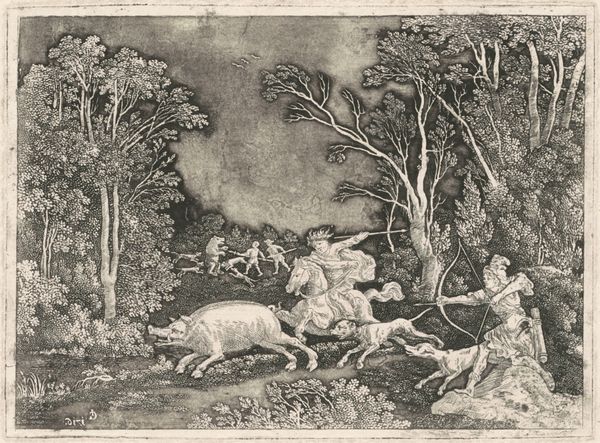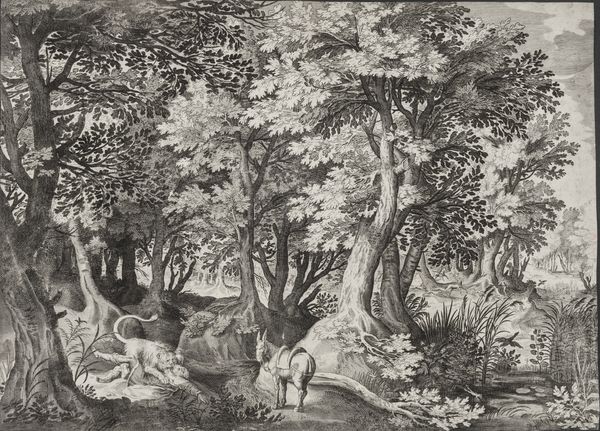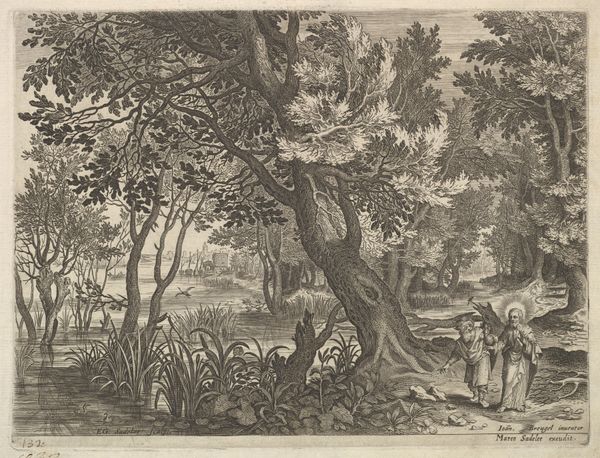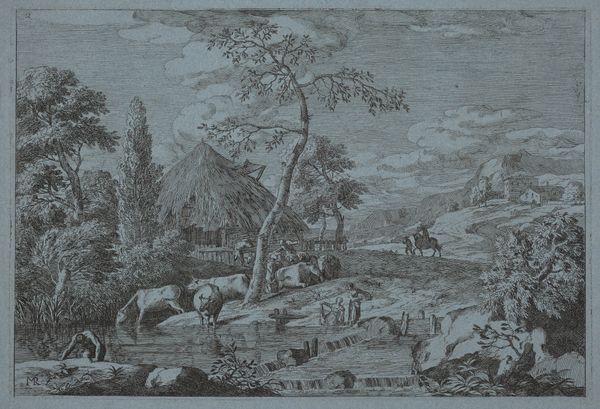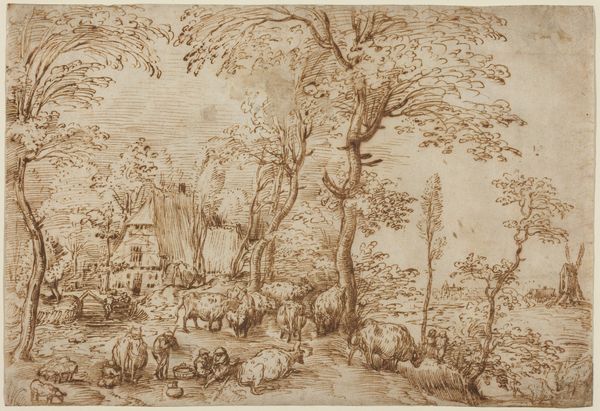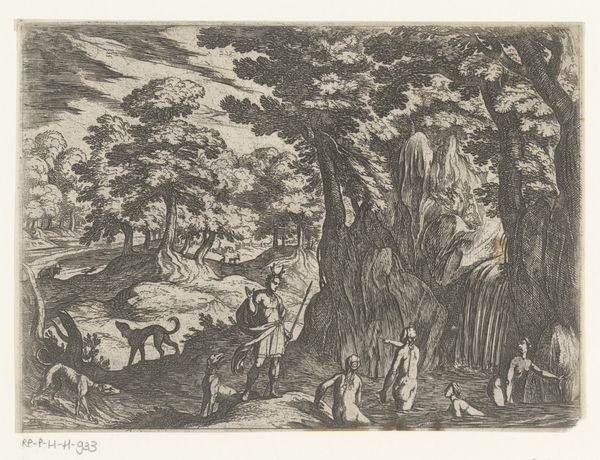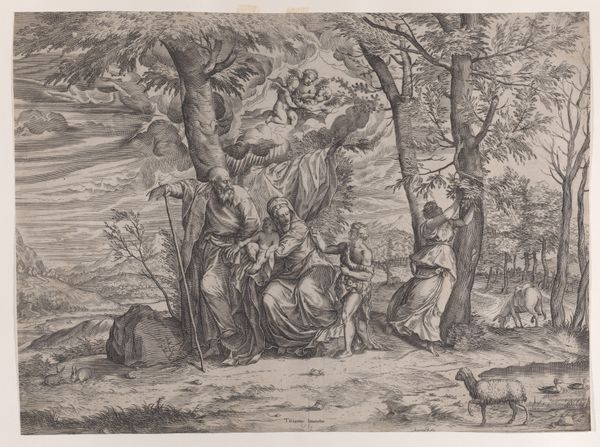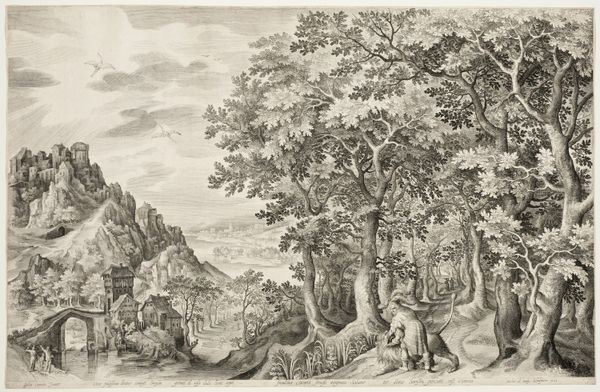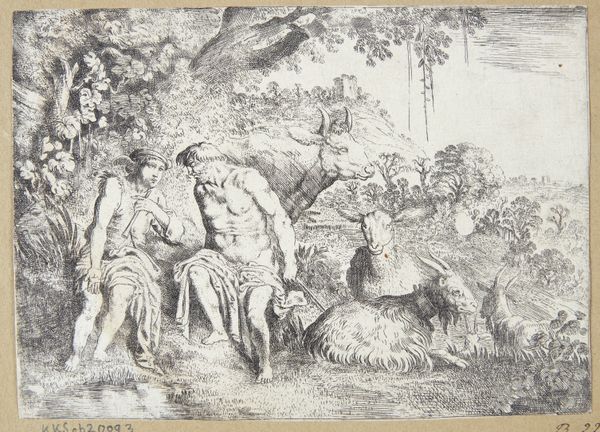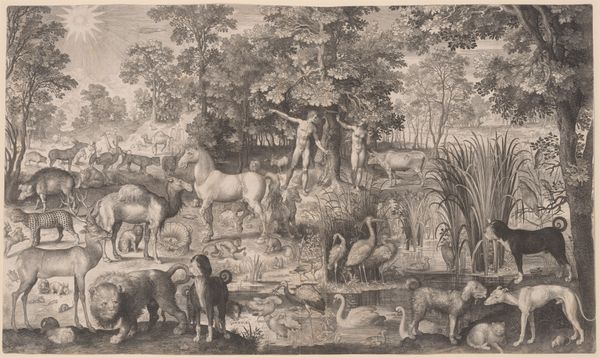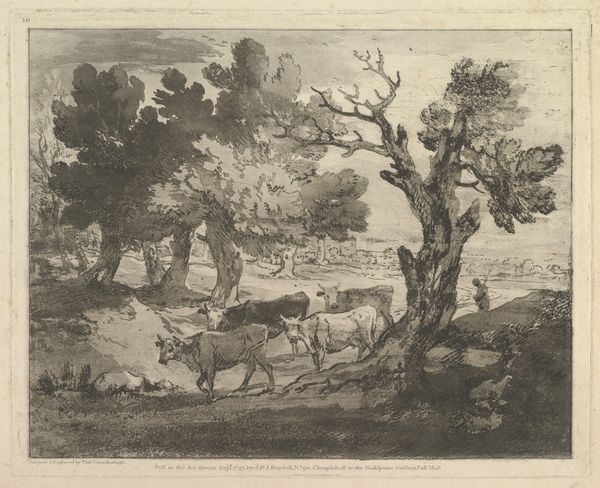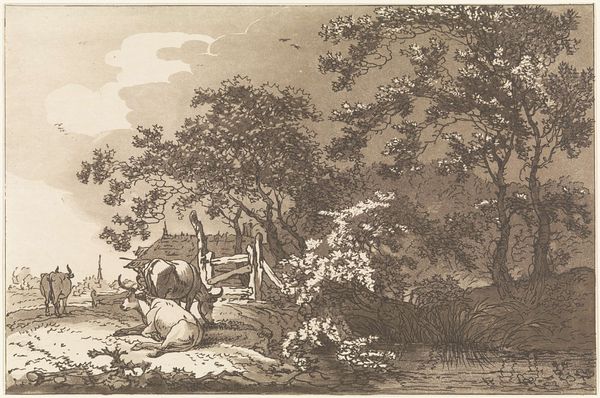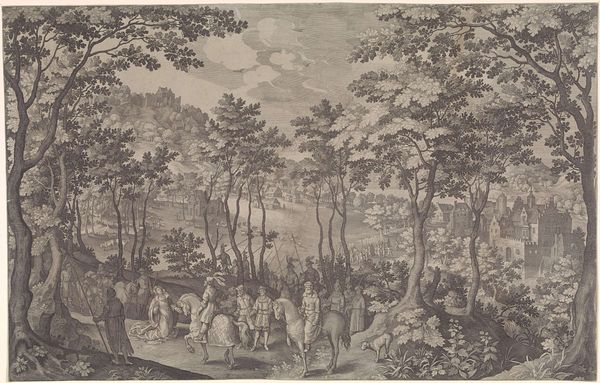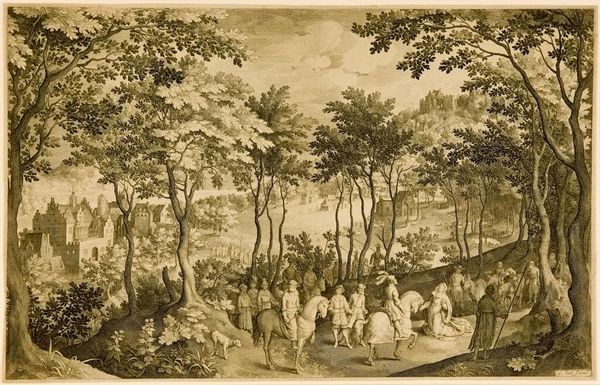
print, engraving
#
baroque
# print
#
landscape
#
figuration
#
engraving
Dimensions: plate: 14.5 × 19.8 cm (5 11/16 × 7 13/16 in.) sheet: 23 × 32.4 cm (9 1/16 × 12 3/4 in.)
Copyright: National Gallery of Art: CC0 1.0
Curator: We are looking at "Nymphs in a Landscape," an engraving produced by Gerhard Janssen around 1716-1717. Art Historian: My first thought is how artificial the scene feels, almost like a stage set. Look at the arrangement of the figures and the somewhat forced perspective of the landscape; it's all quite deliberate. Curator: Yes, the composition certainly guides our eye through distinct spatial zones. The foreground features the reclining figures, and the background is punctuated by the shepherd and his flock. This layering creates a carefully constructed Arcadia. The tonal range in the print contributes greatly to this reading. Notice how areas of denser engraving establish form while sparser lines articulate space. Art Historian: That artifice speaks volumes about the period's obsession with recreating idyllic, pastoral fantasies for a sophisticated urban audience. These landscapes were in high demand amongst a specific sector of society. We must ask who commissioned them and for what purposes. The art market was thriving, so artworks such as these played a role in solidifying a certain kind of aspirational identity among their wealthy consumers. Curator: Intriguing to think about this interplay between art and aspirational social standing. On a technical note, I appreciate how Janssen utilized the engraving medium. His meticulous detail allows him to portray both delicate foliage and textured fabrics, demonstrating mastery over his materials. Art Historian: I find the relative lack of overt classical symbols quite interesting. This choice arguably shifts the emphasis from mythology to a more secularized vision of nature, one that aligns well with burgeoning Enlightenment ideas about human control over the natural world. Although, I still ponder its role beyond the realm of aesthetics and into societal values of the time. Curator: This tension underscores the inherent dynamism in visual representation. A fruitful reminder of art's enduring complexity, wouldn't you say? Art Historian: Indeed, something that invites us to critically examine both the creation and its function within its contemporary society.
Comments
No comments
Be the first to comment and join the conversation on the ultimate creative platform.
